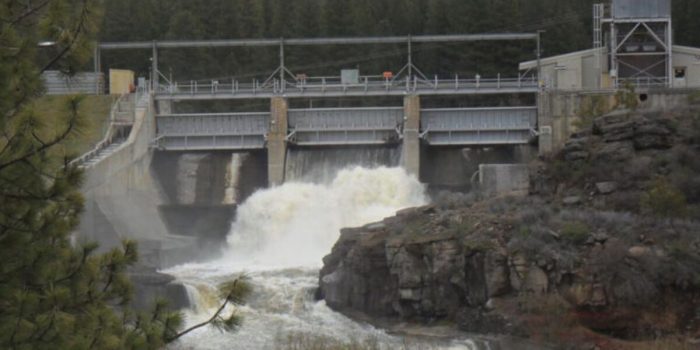The Elwha River in Washington can now flow freely after being trapped by the Elwha and Gilnes Canyon Dams for a hundred years. The removal of these dams, the largest project of its kind in the United States, has started to restore the area around the river.
But soon, an even bigger project will begin on the Klamath River, with four out of six dams already being taken down. The goal is to let the Klamath River flow freely from Oregon to California, helping sediment, organic matter, and migratory fish move more easily.

Removing dams all over the United States is happening for different reasons. Many dams are getting old and are past their expiration date, making them more likely to fail, especially with climate change. Some dams aren’t doing what they were built for, causing harm to the environment and disrupting the lives of sensitive species. Also, dams have forced tribal nations off their lands, cutting off ties to culturally important waterways and species.
Dams, whether big or small, have different purposes like controlling floods, making electricity, and storing water for towns or farms. But they also mess up river areas by trapping sediment, leading to problems downstream and changing how rivers work. Removing dams can fix these issues, making life better for migratory fish and other creatures.

The consequences of dam presence extend beyond the immediate river environment. Changes in water temperature, oxygen levels, and water quality can occur, affecting both aquatic life and communities living near the rivers. Cyanobacteria blooms, resulting from stagnant reservoir water, pose health risks and impact those who rely on the river for fishing and recreation, especially members of Native American tribes.

Migratory species face obstacles due to dams, but solutions such as fish ladders or fishways exist to provide detours for their migration. Dam removal also contributes to the enrichment of river ecosystems by allowing the downstream flow of logs, sticks, and trees, creating complex habitats for fish and birds.
The removal of dams, particularly large ones, involves draining the reservoir and managing stored sediment. Each dam removal project is unique, requiring extensive planning. Large dam removals typically start with draining the reservoir, deconstructing the dam, and undertaking river restoration. The process can be complicated, involving considerations for sediment management, engineering challenges, and potential environmental impacts.

The Klamath River dam removal project, set to be the world’s largest, emphasizes the involvement of indigenous tribes, such as the Karuk, Klamath, Hoopa, and Yurok, who have traditionally fished the river. These tribes play a significant role in the leadership and restoration efforts associated with the dam removal.
Restoration includes the collection and propagation of native seeds to prevent invasive species from taking over the ecosystem. The indigenous perspective emphasizes a relationship with natural elements, viewing resources not as commodities for use but as integral parts of a living environment.


